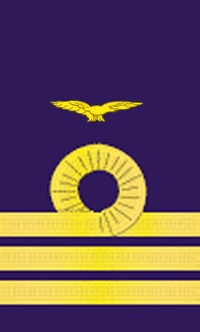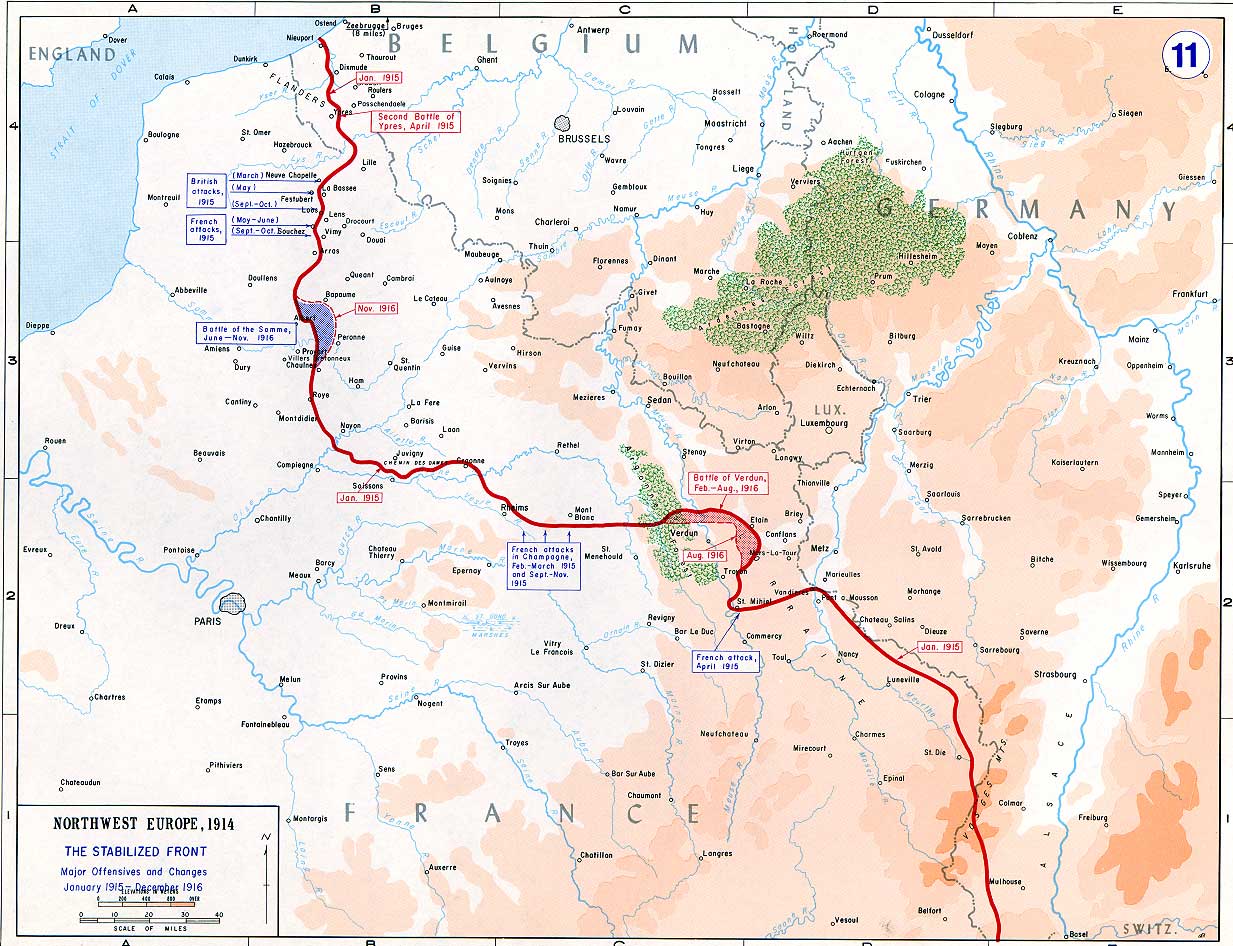|
Reginald Mills (RAF Officer)
Air Vice Marshal Reginald Percy Mills, (7 December 1885 – 4 July 1968), was a senior commander in the Royal Flying Corps and later the Royal Air Force during the First World War and the early years of the Second World War. Early life Reginald Mills was born in Spalding, Lincolnshire, the son of William Henry Mills, an architect and Emily Wiles Quincey Mills (née Hobson). His siblings included William Hobson Mills, an organic chemist and winner of the Davy Medal. He was educated at Felsted School. Between 1905 and 1912 he held reserve commissions in The Lincolnshire Regiment and the Royal Fusiliers, becoming a regular officer in the latter in 1912. Royal Flying Corps service Mills was awarded Royal Aero Club Aviator's Certificate no. 377 on 17 December 1912, and was appointed a flying officer in the RFC on 14 August 1913, joining No. 4 Squadron. He was among the first RFC pilots to cross the English Channel at the beginning of the First World War and saw action at the Batt ... [...More Info...] [...Related Items...] OR: [Wikipedia] [Google] [Baidu] |
Spalding, Lincolnshire
Spalding () is a market town on the River Welland in the South Holland district of Lincolnshire, England. The town had a population of 31,588 at the 2011 census. The town is the administrative centre of the South Holland District. The town is located between the cities of Peterborough and Lincoln, as well as the towns of Bourne, March, Boston, Wisbech, Holbeach and Sleaford. The town was well known for the annual Spalding Flower Parade, held from 1959 to 2013. The parade celebrated the region's vast tulip production and the cultural links between the Fens and the landscape and people of South Holland. At one time, it attracted crowds of more than 100,000. Since 2002 the town has held an annual pumpkin festival in October. History Ancient Archaeological excavations at Wygate Park in Spalding have shown that there has been occupation in this area from at least the Roman period, when this part of Lincolnshire was used for the production of salt. It was a coastal siltland. At ... [...More Info...] [...Related Items...] OR: [Wikipedia] [Google] [Baidu] |
Davy Medal
The Davy Medal is awarded by the Royal Society of London "for an outstandingly important recent discovery in any branch of chemistry". Named after Humphry Davy, the medal is awarded with a monetary gift, initially of £1000 (currently £2000). History The medal was first awarded in 1877 to Robert Wilhelm Bunsen and Gustav Robert Kirchhoff "for their researches & discoveries in spectrum analysis", and has since been awarded 140 times. The medal is awarded annually and, unlike other Royal Society medals (such as the Hughes), has been awarded without interruption since its inception. The medal has been awarded to multiple individuals in the same year: in 1882, for example, it was awarded to Dmitri Mendeleev and Julius Lothar Meyer "for their discovery of the periodic relations of the atomic weights"; in 1883 to Marcellin Berthelot and Julius Thomsen "for their researches in thermo-chemistry"; in 1893 to Jacobus Henricus van 't Hoff and Joseph Achille Le Bel "In recognition of ... [...More Info...] [...Related Items...] OR: [Wikipedia] [Google] [Baidu] |
Kabul Airlift (1928-29) , during the Taliban offensive
{{dab ...
Kabul airlift may refer to: *Kabul airlift of 1928–1929, during the Afghan Civil War *2021 Kabul airlift Large-scale evacuations of foreign citizens and some vulnerable Afghan citizens took place amid the withdrawal of US and NATO forces during the final days of the war in Afghanistan and the Taliban offensive in Afghanistan in 2021. After the ... [...More Info...] [...Related Items...] OR: [Wikipedia] [Google] [Baidu] |
Embassy Of The United Kingdom, Kabul
The Embassy of the United Kingdom in Kabul was the United Kingdom's diplomatic mission to Afghanistan. The British first established a diplomatic mission, a legation, in 1922 after the Anglo-Afghan Treaty of 1919. The Viceroy of India George Curzon, 1st Marquess Curzon of Kedleston ordered that a large and opulent compound be constructed and this was completed in 1927. The legation was withdrawn in the Kabul Airlift as a result of the 1928-29 civil war but was re-established in 1930. The legation became an embassy in 1948 but this was withdrawn in 1989 following the Soviet withdrawal from Afghanistan. The embassy compound was handed over to Pakistan in 1994. Following the 2001 United States invasion of Afghanistan an embassy was re-established at a new site in the Wazir Akbar Khan District. The embassy, on the edge of Kabul's secure zone, was considered vulnerable to attack in 2018 and consideration was given to a new site, but did not proceed. Following the start of the ... [...More Info...] [...Related Items...] OR: [Wikipedia] [Google] [Baidu] |
Wing Commander (rank)
Wing commander (Wg Cdr in the RAF, the IAF, and the PAF, WGCDR in the RNZAF and RAAF, formerly sometimes W/C in all services) is a senior commissioned rank in the British Royal Air Force and air forces of many countries which have historical British influence, including many Commonwealth countries but not including Canada (since Unification) and South Africa. It is sometimes used as the English translation of an equivalent rank in countries which have a non-English air force-specific rank structure. It ranks immediately above squadron leader and immediately below group captain. It has a NATO ranking code of OF-4. It is equivalent to commander in the Royal and United States Navies, as well as to lieutenant colonel in the British Army, the Royal Marines, and the United States Army, Air Force and Marine Corps. The equivalent rank in the Women's Auxiliary Air Force and the Women's Royal Air Force (until 1968) and in Princess Mary's Royal Air Force Nursing Service (unti ... [...More Info...] [...Related Items...] OR: [Wikipedia] [Google] [Baidu] |
Battle Of The Somme
The Battle of the Somme (French: Bataille de la Somme), also known as the Somme offensive, was a battle of the First World War fought by the armies of the British Empire and French Third Republic against the German Empire. It took place between 1 July and 18 November 1916 on both sides of the upper reaches of the Somme, a river in France. The battle was intended to hasten a victory for the Allies. More than three million men fought in the battle of whom one million were wounded or killed, making it one of the deadliest battles in human history. The French and British had committed themselves to an offensive on the Somme during the Chantilly Conference in December 1915. The Allies agreed upon a strategy of combined offensives against the Central Powers in 1916 by the French, Russian, British and Italian armies, with the Somme offensive as the Franco-British contribution. Initial plans called for the French army to undertake the main part of the Somme offensive, supported ... [...More Info...] [...Related Items...] OR: [Wikipedia] [Google] [Baidu] |
Battle Of Mons
A battle is an occurrence of combat in warfare between opposing military units of any number or size. A war usually consists of multiple battles. In general, a battle is a military engagement that is well defined in duration, area, and force commitment. An engagement with only limited commitment between the forces and without decisive results is sometimes called a skirmish. The word "battle" can also be used infrequently to refer to an entire operational campaign, although this usage greatly diverges from its conventional or customary meaning. Generally, the word "battle" is used for such campaigns if referring to a protracted combat encounter in which either one or both of the combatants had the same methods, resources, and strategic objectives throughout the encounter. Some prominent examples of this would be the Battle of the Atlantic, Battle of Britain, and Battle of Stalingrad, all in World War II. Wars and military campaigns are guided by military strategy, wher ... [...More Info...] [...Related Items...] OR: [Wikipedia] [Google] [Baidu] |
World War I
World War I (28 July 1914 11 November 1918), often abbreviated as WWI, was List of wars and anthropogenic disasters by death toll, one of the deadliest global conflicts in history. Belligerents included much of Europe, the Russian Empire, the United States, and the Ottoman Empire, with fighting occurring throughout Europe, the Middle East, Africa, the Pacific Ocean, Pacific, and parts of Asia. An estimated 9 million soldiers were killed in combat, plus another 23 million wounded, while 5 million civilians died as a result of military action, hunger, and disease. Millions more died in Genocides in history (World War I through World War II), genocides within the Ottoman Empire and in the Spanish flu, 1918 influenza pandemic, which was exacerbated by the movement of combatants during the war. Prior to 1914, the European great powers were divided between the Triple Entente (comprising French Third Republic, France, Russia, and British Empire, Britain) and the Triple A ... [...More Info...] [...Related Items...] OR: [Wikipedia] [Google] [Baidu] |
English Channel
The English Channel, "The Sleeve"; nrf, la Maunche, "The Sleeve" ( Cotentinais) or (Jèrriais), ( Guernésiais), "The Channel"; br, Mor Breizh, "Sea of Brittany"; cy, Môr Udd, "Lord's Sea"; kw, Mor Bretannek, "British Sea"; nl, Het Kanaal, "The Channel"; german: Ärmelkanal, "Sleeve Channel" (French: ''la Manche;'' also called the British Channel or simply the Channel) is an arm of the Atlantic Ocean that separates Southern England from northern France. It links to the southern part of the North Sea by the Strait of Dover at its northeastern end. It is the busiest shipping area in the world. It is about long and varies in width from at its widest to at its narrowest in the Strait of Dover."English Channel". ''The Columbia Encyclopedia'', 2004. It is the smallest of the shallow seas around the continental shelf of Europe, covering an area of some . The Channel was a key factor in Britain becoming a naval superpower and has been utilised by Britain as a natural d ... [...More Info...] [...Related Items...] OR: [Wikipedia] [Google] [Baidu] |
List Of Pilots Awarded An Aviator's Certificate By The Royal Aero Club In 1913
The Royal Aero Club issued Aviators Certificates from 1910. These were internationally recognised under the Fédération Aéronautique Internationale. List Legend See also Lists for other years: *1910 * 1911 *1912 *1913 * 1914 *List of pilots with foreign Aviator's Certificates accredited by the Royal Aero Club 1910-1914 A ''list'' is any set of items in a row. List or lists may also refer to: People * List (surname) Organizations * List College, an undergraduate division of the Jewish Theological Seminary of America * SC Germania List, German rugby union ... References {{DEFAULTSORT:Pilots awarded an Aviator's Certificate by the Royal Aero Club in 1913 Aviation pioneers Lists of aviators 1913 in aviation Aviat 1913-related lists 1913 in the United Kingdom ... [...More Info...] [...Related Items...] OR: [Wikipedia] [Google] [Baidu] |
Royal Aero Club
The Royal Aero Club (RAeC) is the national co-ordinating body for air sport in the United Kingdom. It was founded in 1901 as the Aero Club of Great Britain, being granted the title of the "Royal Aero Club" in 1910. History The Aero Club was founded in 1901 by Frank Hedges Butler, his daughter Vera and the Hon Charles Rolls (one of the founders of Rolls-Royce), partly inspired by the Aero Club of France. It was initially concerned more with ballooning but after the demonstrations of heavier-than air flight made by the Wright Brothers in France in 1908, it embraced the aeroplane. The original club constitution declared that it was dedicated to 'the encouragement of aero auto-mobilism and ballooning as a sport.' As founded, it was primarily a London gentlemen's club, but gradually moved on to a more regulatory role. It had a clubhouse at 119 Piccadilly, which it retained until 1961.Anthony Lejeune, ''The Gentlemen's Clubs of London'' (London, 1978) p.178 The club was granted i ... [...More Info...] [...Related Items...] OR: [Wikipedia] [Google] [Baidu] |






_United_Kingdom_Car_Badge.jpg)